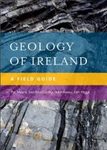"A big, weighty package arrived on my desk last Friday morning. Having corresponded with The Collins Press a few days previously, I knew exactly what that package would contain, and eagerly tore it open to extract Bird Habitats in Ireland. A first flick-through confirmed my suspicions that this was going to be a beautifully presented and well-designed publication: almost 280 pages of text, balanced perfectly with a plethora of top-quality images, were rounded off by a 20-page bibliography that ultimately typifies the extensive research and efforts that have gone into the book's production.
I am a huge fan of Ireland, both as a nation and as a birdwatching destination. Being at the western extremities of the Western Palearctic, the island is famous among European birders as one of the best places to search for Nearctic species within the region. Simultaneously, it offers a combination of beautiful scenery and charming hospitality, which invariably ensures that a memorable trip is had 'out west'. However, as this book vividly portrays, there is so much more to Ireland's birds than just vagrant-hunting....
Boasting at least 25 contributing authors — almost all scientists, naturalists and environmental consultants — the book has encapsulated a huge wealth of knowledge in the writing process, and the resulting production is inevitably intricately detailed and accurate. However, the impressive detail within is kept at a level that ensures it remains a consistently fascinating insight into Ireland's birds and their habitats, yet does not provoke the boggy tedium that many scientific papers often do.
Following a well-explained classification of habitat types used within its main content, the book then sets out on a journey that explores, in chapters, all of Ireland's most prominent habitats. These range from the characteristic lowland loughs and turloughs right through to upland bogs and heathland, including coastal, urban, grassland and woodland ecosystems along the way. Within these chapters, a number of subsections analyse various aspects of these wider habitats, as well as providing case studies of certain species that inhabit them. An example of this wonderful detail is the commentary on water treatment works, parks, landfill sites and airports within the urban section, which outlines the importance of each as a habitat for birds, before giving examples of the species that inhabit them. One paragraph I found particularly fascinating was in the 'Airports' subsection, which discussed species that have been involved in collisions with aircraft — I found it amazing (yet somewhat disconcerting!) to learn that species as small as Starlings have caused fatal air crashes in the past! Similarly, as a gull enthusiast, it was educational to read about the health issues of Irish dumps and landfills, and their influence on the Irish Herring Gull population.
In addition to the enriching text, an abundance of colourful photographs and informative tables makes the main content of this book a real pleasure to explore. Throughout the text, the images are positioned perfectly to complement the text, and to give a visual reflection of what one reads. Not only are there plentiful photos of a wide range of Ireland's characteristic, resident, migrant and wintering species, but there are also plenty of glorious images of the Irish countryside — for me, the aerial photograph of Loop Head certainly brought back some fond memories! A range of tables also provide further analysis and explanation for many of the issues discussed in the text, with examples ranging from wintering populations of wildfowl across a number of the more prominent Irish loughs right through to modern human populations within the main Irish cities.
Towards the back of the publication are three more extensive tables: the first details the habitat preferences of the more regularly occurring species across the island, and is essentially a brief summary of the main content of the text. The following two — both appendices — are lists of birds, animals and plants recorded across the island. After this comes the aforementioned bibliography, which is, as one might expect, an incredibly useful source of information for anyone who has any sort of interest in the topics covered within the text.
Editors Richard Nairn and John O'Halloran have gone to great lengths to ensure that Bird Habitats in Ireland is a publication of the highest order. Not only will this book prove essential to Irish ecologists and naturalists, but the more general investigation into the relationships between birds and their habitats will no doubt appeal to others further afield, both for research and recreational purposes. More important, however, is the way this book is written and presented: the perfect balance between detail and simplicity ensures that, along with the fascinating subject matter discussed, this book will prove to be both educational and interesting for anyone who picks it up. Although I must admit that I have a particular passion for Ireland and its birdlife, I struggle to see how the reader could fail to be enchanted by this book, regardless of whether he or she has a mere passing interest in birds, or is the most seasoned of naturalists. Top marks."
- Josh Jones, Tuesday 29th May 2012, www.birdguides.com








































